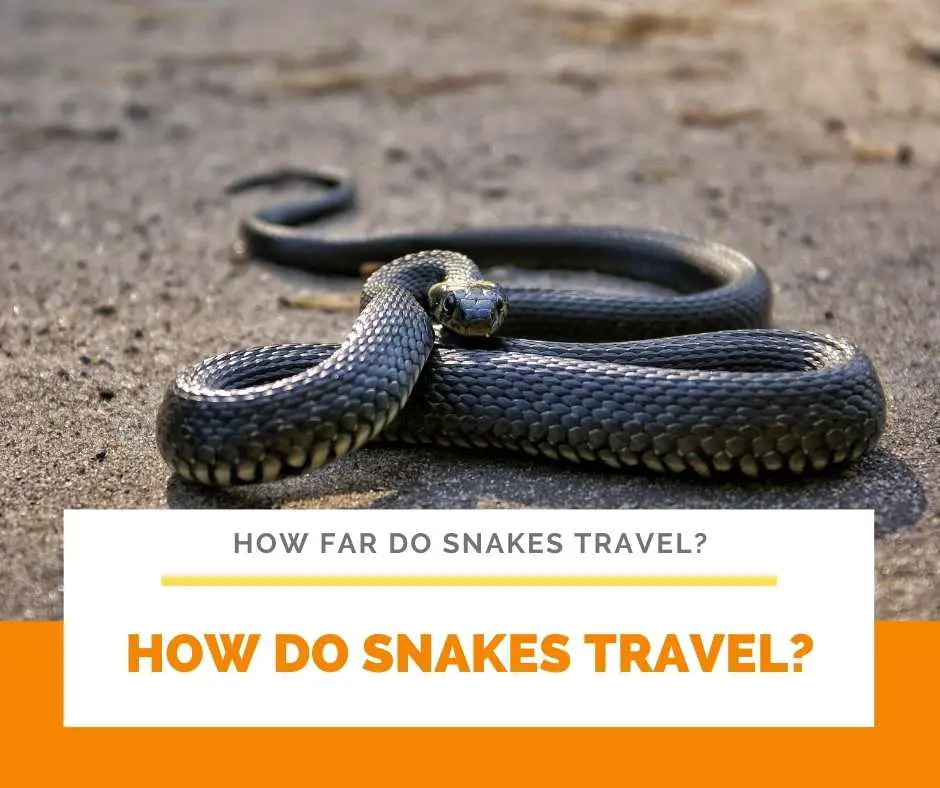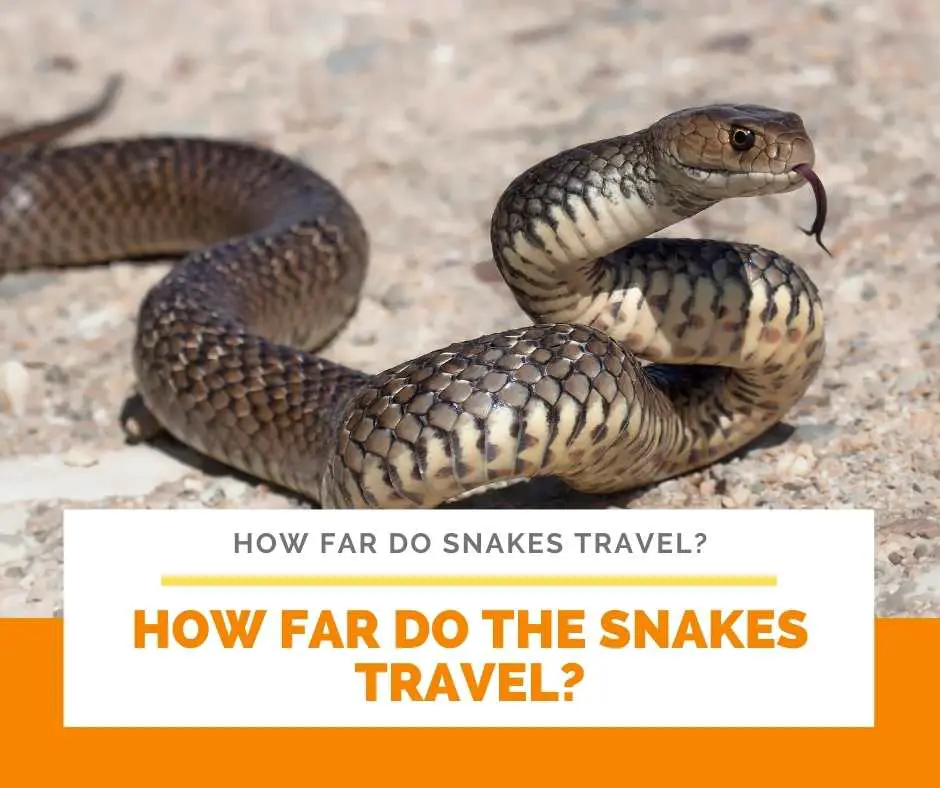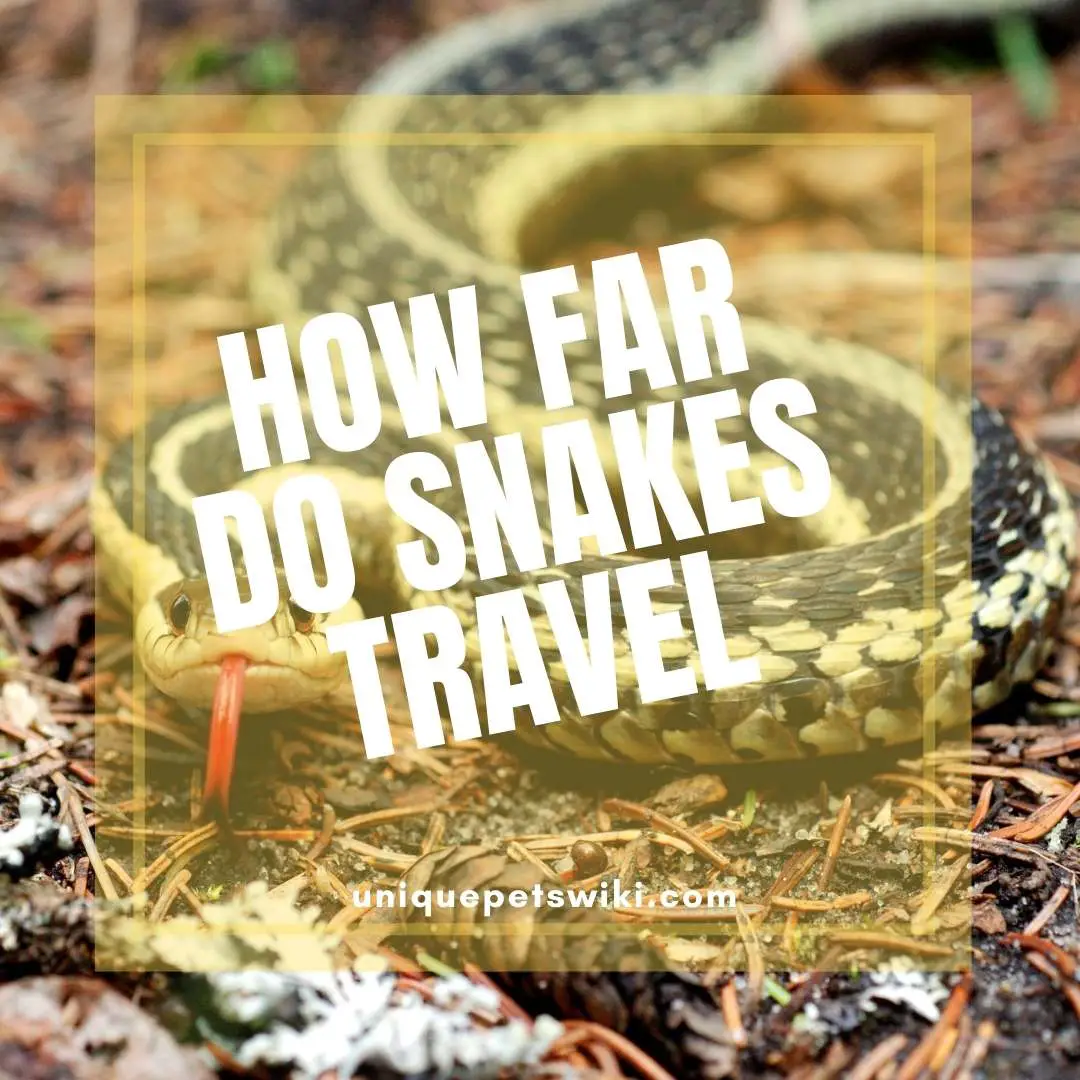How far can the legless and the wingless snakes travel? Snakes are all over the world except in a few continents like Antarctica.
Snakes are capable of using if not two, several styles in their movement. They lack legs, wings, but have superior ventral and dorsal scales that work magically to bring about action.
How far do snakes travel? One blink of a human eye is enough for some snakes to cover quite a significant distance.
Read through the article to comprehend and appreciate the reality in the snakes’ movements.
Contents
How Do Snakes Travel?

Snakes exhibit different types of movement, and they can swim, crawl, or climb.
For one to understand how far do snakes travel, it is crucial to know the speed of progress among the species. Some snakes can go very fast than the others.
For instance, the black mamba snake in Eastern and Southern Africa can cover approximately 20 km within a single hour.
The locomotion changes depending on the nature of the surface the snake is moving along. The following are the four means of locomotion in snakes.
Rectilinear or Caterpillar Movement
This locomotion involves the use of the muscles and the skin to aid in movement along a straightforward surface. The snakes can slowly and carefully travel in a straight line.
The belly skin contracts more than the back and ribcage skin, and the underside scales grips onto the ground. The muscles heave the body forward in a flowing manner similar to the motion of the waves.
The massive bodied snakes such as the boa constrictor and anacondas show this kind of movement, especially in a confined environment. The snake travels at a relatively uniform speed, and it is applicable when they are relaxing only. When they need to move quickly, the mode will change.
Serpentine Movement
This movement is frequent in the majority of the limbless animals like an earthworm, and a significant number of the snakes.
When the snake is traveling, the body curves itself, forming the S-shape loops on horizontal ground.

The movement is possible in areas with obstacles like rocks, twigs, sand, and branches which are difficult to walk on. Such materials provide resistance to progress, but the loops are capable of pushing against it, and keeping going.
The snake consecutively activates the back muscles from the front to back.
The muscles are solitary active in each bend, from the part curving outwards to the inner side of the loop.
As the snake moves on, the head and the neck lead and the entire body follows the same path. Smooth surfaces cannot accommodate this movement.
Sidewinding Movement
Sidewinding movement helps the snake to get going in sliding areas with sand or mud. It quite resembles the serpentine movement in making the bends, but differ in some ways.
The whole body takes static friction with the ground, and the segments of the body take off in the parts connecting to the ground.
The snake sets in motion with the head forward and the body follows with a sideways movement. It is common in sidewinder rattlesnakes.
Concertina Movement
The snake uses the ventral scales to grasp a vertical surface, pulls up the body alternatively into bends and eventually stretches the body forward from the curves. Then the front part becomes still on the surface, and the back part makes the bends again, and the movement progresses. This movement is effective in crawling through narrow pathways and climbing.
How Far Do the Snakes Travel?

A snake can travel to look for food, seek a mate, give birth, or change territory.
Getting back to the question, how far do snakes travel varies among species. Some large-bodied species like rattlesnakes stay around the habitat and wait for the prey to come.
Their body can only move within shorter distances, maybe to look for a mate or relocate from very cold or extreme hot sites during winter.
The active hunters like the black snakes will always go out to hunt, and the majority of them covers quite a reasonable distance before finding the prey.
It is common to the long and thin-bodied snakes that inhabit places with scarce food.
When the winter season comes to an end, the snakes remain around the hibernating areas where they move only to bask during the day. As the spring gets warmer and warmer, the snakes will return to their summer habitat.
In their summer spots, the snakes typically move for shorter intervals. But some males will travel a reasonable distance until they find a female to mate.
When the winter approaches, the snakes will then begin to move to their hibernating habitats or even decide to search for a new one that can take days or weeks.
Generally, many snakes can travel for approximately 4-8 kilometers in an hour.
How Deep Can a Snake Travel Underground?
The majority of the snakes prefer to occupy the already established frogs, turtles, and rodent holes while a few of them can dig a hole in soft or sandy soils.
A snake can inhabit the holes with varying depths depending on the season and the species. For instance, the common viper can go as far as 60 inches below the ground during the winter season, for hibernation to escape the extreme cold weather.
Other species of snakes like the pine snakes can hibernate in holes between 12-42 inches depending on the location and the temperatures.
The holes provide cold and dark habitats and allow the snakes to hide from predators or secretly hunt their prey.
One of the famous snakes’ species in burrowing is the hognose snake. It can dig a minimum of 5 inches deep. Typically, many snakes do not burrow their holes.
Can Snakes Find their Way Back Home?
Snakes can find themselves in new geographical areas after a translocation.
Majority of them will try to trace back to their original home, but they tend to surrender and seek new homes instead.
But sometimes, some species of snakes like the Burmese pythons show a potent ability to find their way back home. How far do snakes travel during this situation will vary with the species and how long is the distance to cover.
Burmese python can travel back home even as far as more than approximately 35 kilometers away. Snakes reside in known ranges and will try to get back to their homes.
However, most of the translocations may expose the snake to threats like a change in the climatic condition, which may be difficult to survive, or even to predators.
If you want to keep snakes away from around, it is beneficial to move them about 18 meters away. It helps them to remain under the same environmental conditions.
Conclusion
Now, there is clear evidence on how far do snakes travel, and it has to do with the snake species and the season.
For instance, a male snake can go up to 1.2 km during spring, when the majority of the snakes tend to breed, to search for females to mate. It is different with the female snakes who travel for quite shorter distances.
The fastest snakes in the world, such as king cobra also can go up to 19 km per hour. Some snakes adapt to travelling for long distances.
